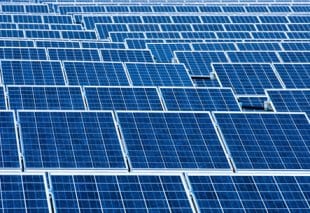 For many years at Intersolar – the premier trade event of the $100 billion+ solar industry – the excitement has been focussed around the latest panels, their efficiency and cost.
For many years at Intersolar – the premier trade event of the $100 billion+ solar industry – the excitement has been focussed around the latest panels, their efficiency and cost.Almost every company in the inverter space was show-casing a hybrid storage option of some sort and some of the new Chinese and Taiwanese companies had built a business from scratch or moved into this space exclusively to create a storage offering. There were battery hybrid storage offerings from Czech Republic, China, India, Spain, Germany, USA and Australia to name a few.
Although companies like Germany’s SMA, with their Sunny backup solution, and Australian company Selectronics have been offering grid battery hybrids for many years, high costs have meant that their takeup has been modest mainly for niche applications.
In all the following feature set seems to be where the hybrid inverters are going and you can expect convergence in this feature set within 12-24 months.
#1 Inverterc can operate synchronised to the grid or indpendent of the grid in Solar UPS (Uninterruptable Power Supply) mode
#2 Inverters have a web based inverface with a timetable that sets it to zero grid export or zero grid import during certain times. This is especially useful for avoidig daytime peak energy prices.
#3 Inverters can import realtime Meteorological data from a countries Meteorological service and if there will be inadequate solar resource the following day then off peak night tariffs can be used (ie before 7AM in the morning) to fully or partially (depending on how much the solar resource is expected to be reduced) charged.
#4 The Inverter can pass through more power than its rating for normal operation. This means the entire customers in home circuits can sit protected behind the inverter, which not only provides UPS but maximises self consumption in the simplest way possible. So if it is rated at 6kVA and the customer occassionaly goes over this limit, the inverter will feed the entire requirement from the grid during normal times when the grid is present. (of course if too much power is drawn during a grid outage the inverter will shut itself down to protect itself and will need to be turned on again).
#5 The export capability of the battery hybrid allows for setting a dynamic maximum grid limit. i.e. Zero grid export (0kVA) means it will provide self consumption only and any deficit will be drawn from the grid. The units can be fully configurable in 0.1kVA increments up to their rating. So, if an operator such as SP Ausnet in Victoria tries to restrict an inverter to feeding in just 3kVA, then a 6kVA inverter can be set to not export more than 3kVA. But if there is both a 3kVA load present and 6kVA of potential to generate (ie midday) then both the load will be satisfied and the full possible export to the grid.








